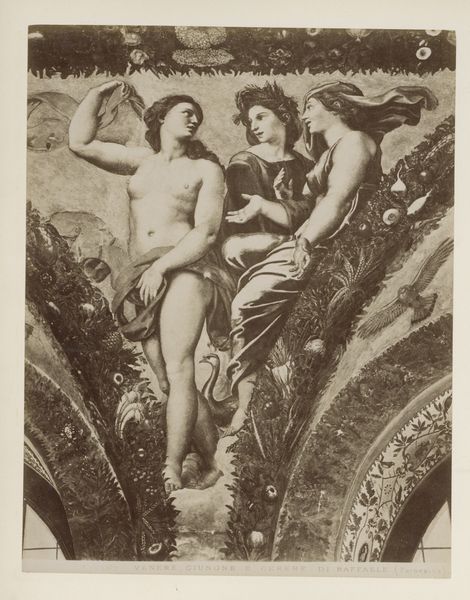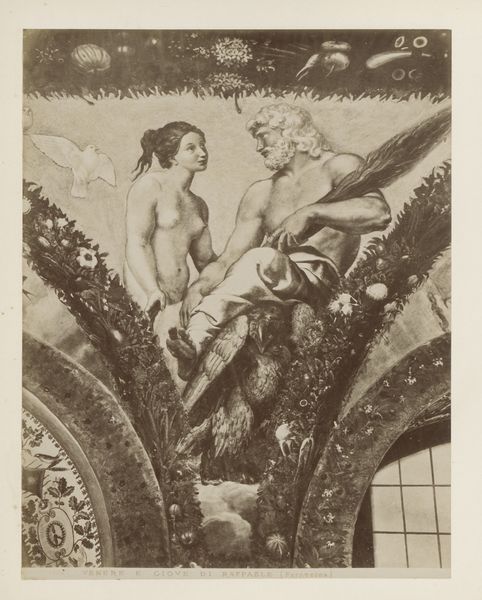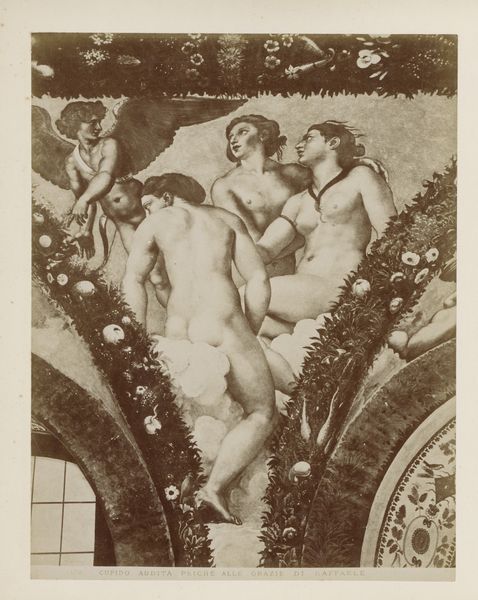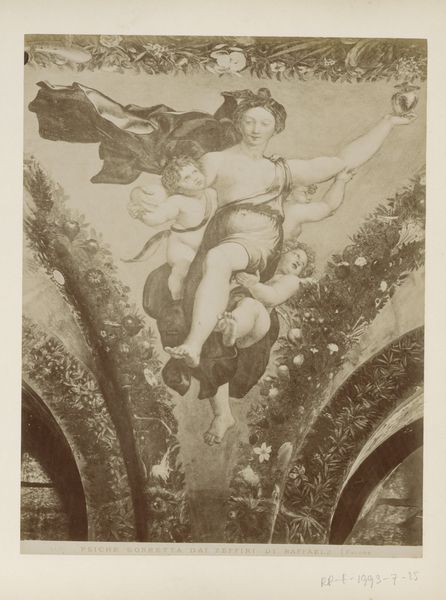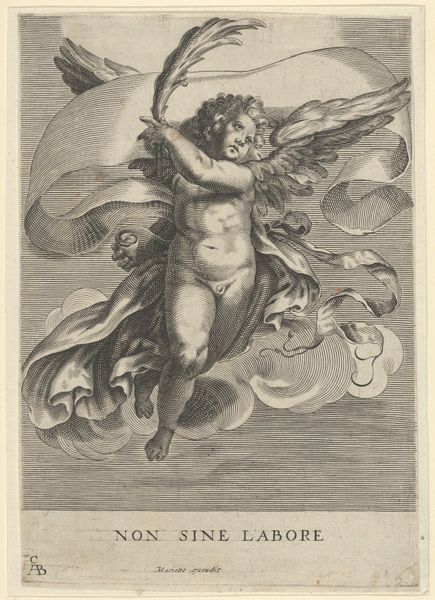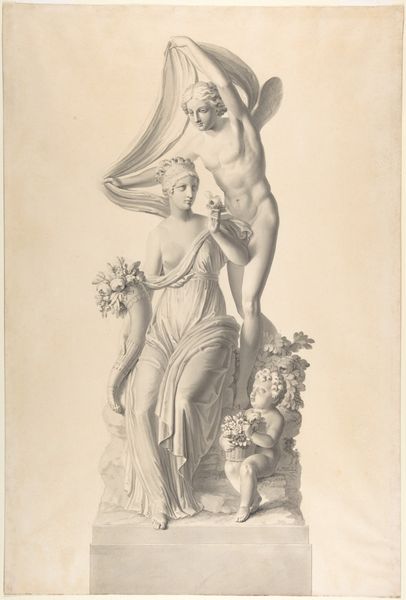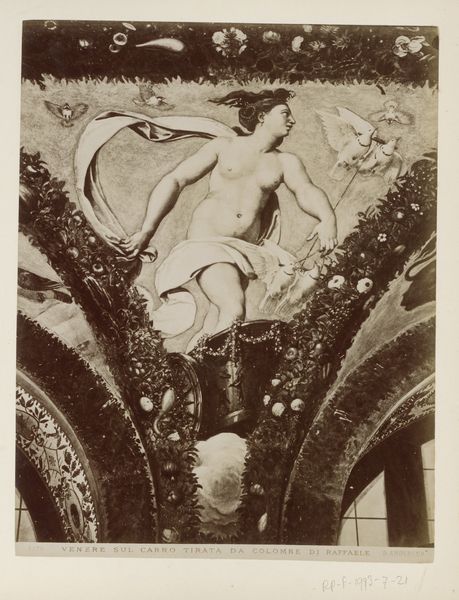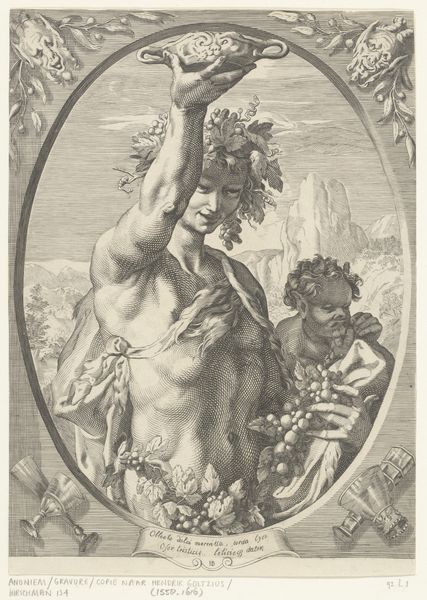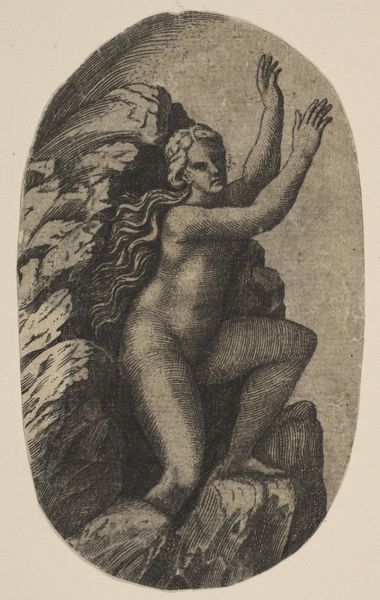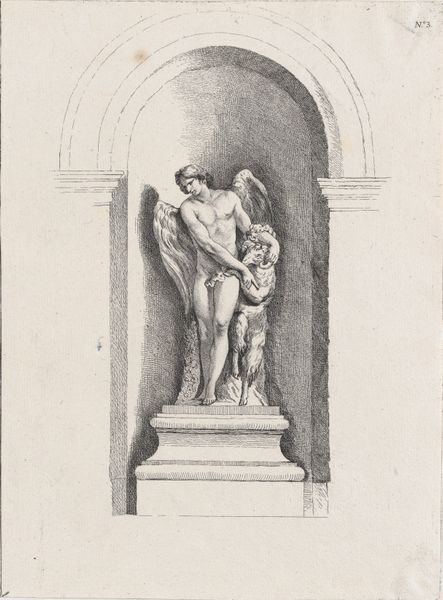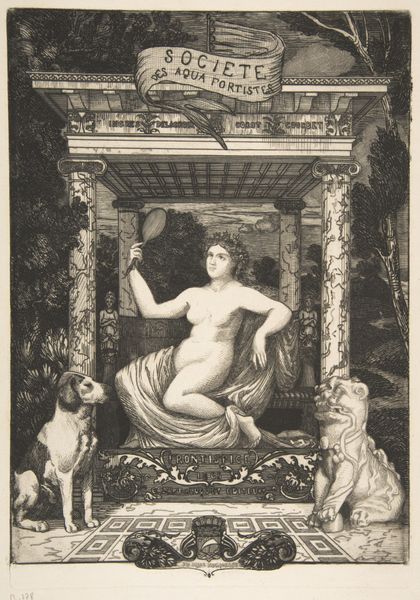
Fotoreproductie van fresco Psyche en Venus door Rafaël in het Farnesina te Rome c. 1870 - 1890
0:00
0:00
print, fresco, photography
#
portrait
#
allegory
# print
#
figuration
#
fresco
#
photography
#
framed image
#
classicism
#
history-painting
#
academic-art
#
italian-renaissance
#
nude
#
realism
Dimensions: height 259 mm, width 196 mm
Copyright: Rijks Museum: Open Domain
Curator: This albumen print, likely created by Domenico Anderson between 1870 and 1890, presents a photographic reproduction of Raphael’s fresco, "Psyche and Venus," originally found within the Villa Farnesina in Rome. Editor: The monochrome palette lends the piece a classical air. Venus looms large, almost muscular, with Psyche offering what looks like a delicate vial, doves circle overhead—it evokes both power and submission simultaneously. Curator: Indeed. The photograph itself becomes a form of material engagement with Renaissance artistic production. Anderson's choice of albumen printing—a process involving coating paper with egg white—speaks to the Victorian era's fascination with replicating and consuming artworks on a mass scale. It bridges the gap between high art and accessible commodity. Editor: Precisely! I see more than mere replication here; I see a conversation across centuries. By capturing Raphael’s vision through the lens, Anderson invites us to examine shifting ideals of beauty, gender dynamics, and power. Venus's physical dominance can be interpreted through feminist lenses—as societal expectation versus bodily autonomy, wouldn’t you say? Curator: Certainly, this highlights evolving receptions. Furthermore, the very act of photographing the fresco raises questions around preservation and dissemination. The image becomes a document, shaping perceptions of Raphael’s work. One must consider the materials involved; albumen, paper, photographic chemicals and their roles in shaping not just an image, but how artistic heritage becomes objectified. Editor: True. We should consider who this image was for. Was it a way to access classical beauty for those who couldn't travel, or was it about reaffirming colonial structures where the elite collect and control access to global artistry? This reproductive process also speaks to how artistic value gets assigned and maintained by the powers who could afford a reproduction of a grand art piece. Curator: A crucial point. Ultimately, this print invites us to examine the materials and circumstances surrounding art. It acts as a visual portal through which we might analyze changes in artistic, social, and even technological contexts. Editor: Yes, looking closer challenges simplistic narratives of Renaissance masterwork, and the photograph itself serves as an object revealing complicated cultural values tied to artistry, labor and gender expectations over centuries.
Comments
No comments
Be the first to comment and join the conversation on the ultimate creative platform.
